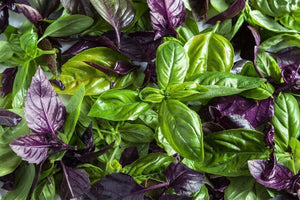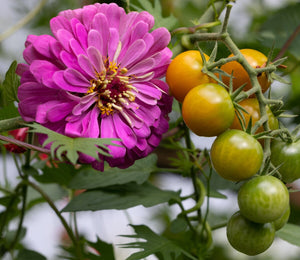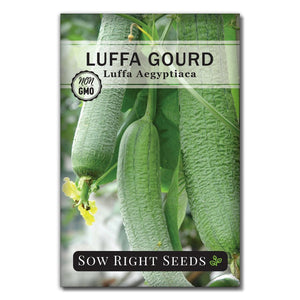Garden Journaling: Celebrate Your Harvest and Plan for Next Season!
Helpful tipsGardening is a lifetime of learning by experience. Even master gardeners have new successes and challenges each season. You can expand your gardening knowledge by writing down what you observe and learn each season and year after year. Keeping a garden journal can help you go from a beginner to a wise expert.

What is Garden Journaling?
Garden journaling is a simple way to become a better gardener. A garden journal is a place to write your observations and appreciate what you are learning.
Each garden is unique with its own microclimate. Your backyard growing space will be different than your neighbor’s. By keeping track of what you’re growing and how it performs in your garden, you will learn what does well and why. With this information, you can make a better plan for next season and try growing more challenging plants.
Even if you haven’t been keeping a regular garden journal, the winter months can be the perfect time to catch up. During this time, you can reflect on what you enjoyed while planning what you want to change or add.
Here are some simple ways to keep a gardening journal so you can grow a better garden every year.
How do I start a garden notebook or journal?
Choose a sturdy notebook to start a garden journal. You want something that will last several years and stand up to a little dirt. You can also use digital methods, such as gardening or note-taking apps. A garden journal can also be a calendar. Each day, jot down what you observe.

What should I keep track of in my garden journal?
There are many things you could write in your gardening journal. What you decide to write will be a helpful resource for you and your unique garden.
You can start by asking some essential questions:
What gardening tips did I learn this year?
What challenges came up?
What were my successes?
What changes do I want to make before planting next year?
What do I want to keep the same?
To get accurate data points to use next year, write down:
What varieties you planted, as well as when and where.
Note dates of when you started seeds indoors and when they were ready for transplanting outdoors.
Write down temperatures and weather.
Take note of pests and diseases and anything you did to control them.
It can also be helpful to note the date when pests appeared. It will help you know when to expect them the following year.
Keep track of your sources:
Note where you purchased seeds or starts.
Note what you may want to plant again or something new to try.
Add pictures:
It can be helpful to take pictures and add those to your garden journal. You might even want to keep some pressed flowers in the pages.
How often should I write in a garden journal?
If you’re highly scientific, you might take notes every day. For most gardeners, that level of detail isn’t going to happen. Weekly notes or even every other week will be helpful. Take note of specific dates when planting and harvesting. This will help you plan for next year. You’ll know if you need to plant something earlier or later to have the expected harvest.

How Do I Plan My Garden For Next Year?
Turn to your garden journal, and you’ll have the answer to that question. Review your notes and see what you will grow again, what you will skip, and what you will add. You can also draw out your garden design based on what you did the year before, especially if you need to rotate crops.
Gardening Lessons Learned at Sow Right Seeds
At Sow Right Seeds, we also track what we grew and how it did. We’re gardeners, and we learn from each other. Here are some of the things we’re learning from our gardening this year and some things we’re looking forward to for next year.
Our Favorite Varieties
It's hard to pick our favorites. These are just a few of the things we enjoyed growing this year.
Chaille grew the tallest Red Garnet Amaranth plants we’ve ever seen. “They truly love the insane heat we had this year. This one is at least 8 feet tall."

Clemson Spineless Okra became a new favorite. “It was so much easier to pick than the others since it didn't have spines, hence the name. I had never grown okra, and it was fun bringing it home to cook and share with my kids.” - Sara
Medicinal herbs - Growing, planting, and familiarizing myself with so many varieties of beneficial medicinal herbs has given me a beautiful glimpse into the loving heart and intelligent mind of God and His care for our health! - Ashley
Helpful Gardening Tips from Our Garden Journal
Make more starts than you intend to plant. That way, you have extras in case some don't germinate. Or if any die after transplanting, you'll have some to replace them with. This also allows you to plant only the strongest of the starts, giving your garden the best fighting chance!
“Fertilizing regularly after the seedlings get a little bigger makes such a difference - I was amazed!” - Meghann
“I learned that tomato stalks and leaves are poisonous to ingest because they are in the nightshade family and create cyanide when eaten.” - Nicole
“You can never have too many plant markers! And where you put them matters. If you place the marker too close to the plant, it will get swallowed up by the plants, and you will have no idea which varieties are which.” - Sara
"I learned not to pick green beans while they're wet, as they could form rust spots on later harvests." - Maddie
"Sunlight really does matter. The flowers I grew in a shady spot never grew as large or had as many blooms as those grown in full sun.” - Beverly
“When transplanting tomato starts, pick off all the branching leaves, leaving only the top bunch, and plant deep into the ground to where the leafed top is visible. Those fuzzy hairs on the stalk will become new roots, resulting in a well-established tomato plant.” - Ashley
“Some flowers love the cool weather such as nasturtiums. These edible plants make a beautiful garden.” - Patty
Let your flowers go to seed. Your favorites will come up again as volunteers.
Pests
We experienced a lot of trouble with pests this year and used natural methods to eliminate aphids and squash bugs. It will be interesting to see what next year brings.
Pets aren’t usually garden pests, but you do need to keep puppies out!
What we’re looking forward to for next year:
We look forward to growing more lavender and dahlias. They never fail to delight.
Coleus grew amazingly well from tiny seeds. It’s a must-grow for next year’s flower beds.
“I'm looking forward to growing some new flowers this year - especially our upcoming calendulas because they are so pretty and so easy to grow.” - Maddie
Next season, we plan to take advantage of cooler weather and grow cool-weather crops such as kohlrabi and bok choy.
Garden journaling will help you process all those tips and tricks you're learning. Writing them down will give you a place to look when you find yourself questioning what you did before and if it worked.
Garden Journal Wisdom from Sow Right Seeds
From our years as gardeners, we can definitely say that there is always something that doesn't do well in a given year because of pests, too much rain, not enough rain, too much hot weather, or too much cold. But there is always next year to try again!
Happy Gardening!
Leave us a comment and let us know what you learned this year.
Written by Sow Right Seeds Team





Leave a comment